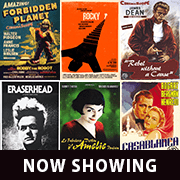 Ask anyone from St. Croix to write down the names of important culture bearers and people working to preserve old Crucian traditions, and you’ll find quelbe singer, songwriter, guitar player and bandleader Wayne "Bully" Petersen on that list. His band, Bully and the Musical Kafoonaz, has played both new and traditional songs in the quelbe form since he founded it back in 1991, and today it stands as one of only a handful left playing exclusively in the quelbe form.
Ask anyone from St. Croix to write down the names of important culture bearers and people working to preserve old Crucian traditions, and you’ll find quelbe singer, songwriter, guitar player and bandleader Wayne "Bully" Petersen on that list. His band, Bully and the Musical Kafoonaz, has played both new and traditional songs in the quelbe form since he founded it back in 1991, and today it stands as one of only a handful left playing exclusively in the quelbe form.
What are "kafoonaz" or "kafooners?”
"In Crucian, to kafoon is to knock down, as in, ‘Don’t kafoon him,’ or if I fall down the stairs, I ‘kafoon’ down the stairs," Petersen said Monday while chatting in his Our Town Frederiksted office. "We are saying we’re going to kafoon you over with our quelbe."
Born and raised in Frederiksted, Petersen heard the traditional music in the streets, houses and parties while he was growing up, and for almost two decades now has worked to preserve and carry forward the old-time music as a part of the overall legacy of Crucian and V.I. culture.
"When I grew up, it was not unusual to see someone playing ukulele in the street," Petersen said. "I bought my first ukulele myself when I was 15 and learned to play in those same streets. We’d sit in the market or the corner or in someone’s house and teach each other new licks to play."
The quelbe Petersen plays grew out of a variety of musical traditions, from jazz to cariso and calypso to European quadrille dances, adopted and adapted by local musicians, who in the early days, especially, often played homemade instruments.
The songs are danceable and upbeat as a rule, and the lyrics can be about anything.
"They can be about gossip or they can tell a story," Petersen said. "Many songs are about familiar people. I just wrote one about Alexander Hamilton I played the other day on the radio. Others may have a message, or some humor."
Many Caribbean islands have a homegrown music similar to quelbe, he said, all growing from a similar folk-music tradition.
"Quelbe and jazz have parallel histories," Petersen said. "They both had humble beginnings. Both were originated by people of African descent with no formal training in music. And, like jazz, quelbe has its standards that everyone knows."
There is a Crucian quelbe repertoire of a few hundred songs that are like standards but, like jazz or any other living musical form, there are new songs, new traditions and even new instruments in quelbe, he said.
"A full quelbe band today has seven people, but it used to be you needed only three," he said. "You have a lead instrument, which today is either saxophone or flute. But that has changed over time. At first, it was the wooden fife, later came the flute and later still the sax."
Behind the lead there is a guitar or a banjo and a steel triangle and squash for rhythm.
"That steel and squash give a distinctive sound to the music and the sound of the scratching on the squash is where quelbe got its other name: scratch music," he said.
Instead of electric or standup bass, old time quelbe bands used the pipe, a large wind instrument often handmade from a steel muffler pipe.
"There was a taboo about the pipe and some thought playing it would hurt your health, so people stopped playing it," he said. "So most bands fill the same role now with the electric bass. I do too, but when I want to be authentic and old time, there is no bass and only acoustic guitar."
George Rawlins is one of the last remaining old-time pipe players left. Petersen gets him to play with the Kafoonaz as often as possible, but Rawlins is well into his 80s and isn’t up for a full schedule, Petersen said.
The members of the Kafoonaz vary depending on who is available and what sort of an event the band is playing.
"When I break it down to the basics we are a three-piece act: myself on the acoustic guitar, Asta Williams on squash and Sandra Michael on the steel triangle,” Petersen said. “Me, Asta and Sandy have been doing this for years. It’s always been a part of us."
Williams and Petersen started working together years ago.
"Asta’s of my father’s generation, but I actually trained Asta to play the squash," he said. "We were both working with the Junior Kafooners. She was on the tenant council of the Ludvig Harrigan Court and I was at Marley, and while we were working with the Junior Kafooners she said she wanted to learn. She’s very dedicated and loyal and dedicated to preserving the culture, and it’s great fun working with her and Sandra, too, all these years."
When the three play, it’s almost like a vaudeville routine or a music sketch on the 1970s TV variety show “Hee-Haw,” but with quelbe music and old Afro-Caribbean stories with crabs, soursop and guava woven into them. They banter back and forth, making friendly fun of each other between songs and sometimes during them.
When the band has to pump up the volume to fill a larger forum and be heard by a larger crowd, Petersen goes electric and adds instruments. The electric Kafoonaz lineup these days includes either Sylvester “Blinky” McIntosh or Dimitri Copemann on saxophone, Paul Horsford on bass and a conga player.
"But there aren’t that many of us around, and everyone plays with everyone else at some point," Petersen said. Indeed, just this past Saturday, Eldred "Edgie" Christian of rival quelbe band Stanley and the Ten Sleepless Nights joined Bully and the Kafoonaz for a concert and jumbie stories at Camp Mt. Victory.
What’s next for the Kafoonaz? Petersen says they have a new CD coming out soon, with all new original songs. They have gigs coming up at Divi Carina Bay Resort. They will play at the Crucian Christmas Festival. Every year on July 2 Petersen plays for the Emancipation Tea, a traditional salon held on the eve of the July 3 V.I. emancipation celebration.
If you’d like to find out more about Bully Petersen and the Kafoonaz or hire them to play, call Petersen at Our Town Frederiksted, at (340) 772-3550.










